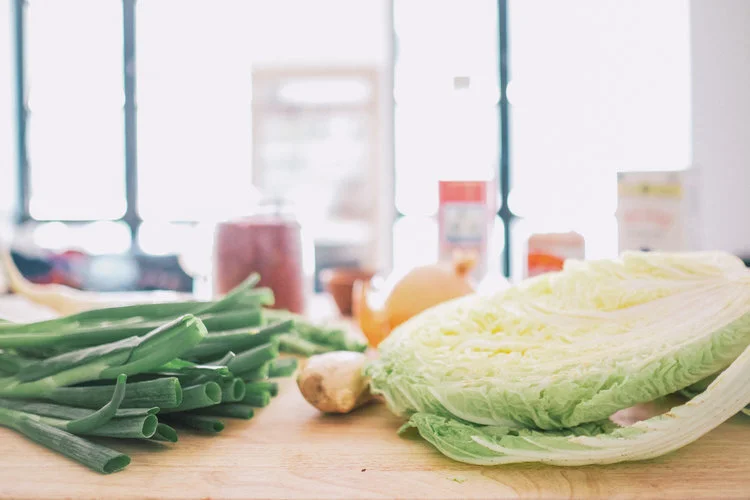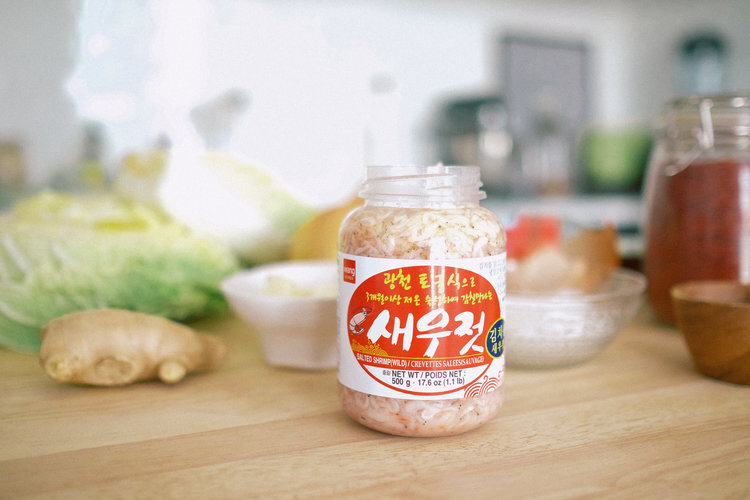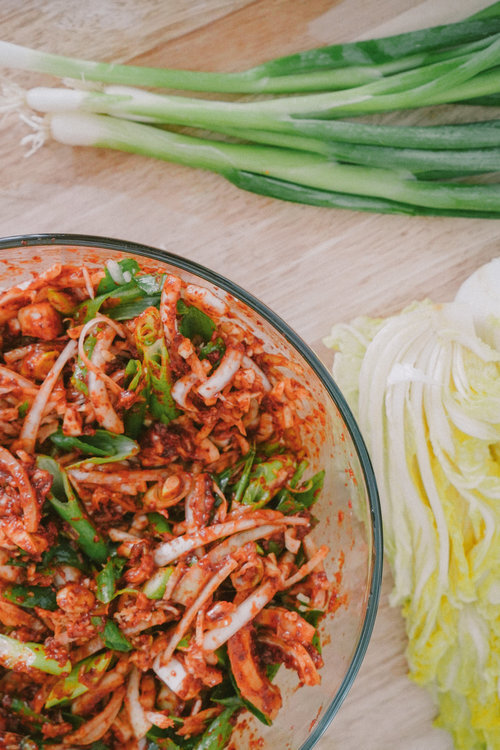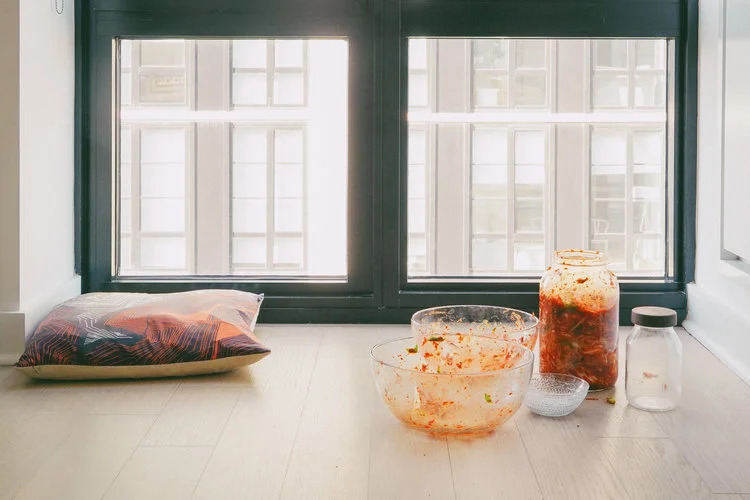baechu kimchi {napa cabbage kimchi}
hola!
the heat in new york is the summer equivalent to being snowed in during the winter. i haven’t dared to step foot outside the apartment because my weather app tells me that it’s about a hundred degrees with the humidity, which is basically a fiery inferno that this soul will not brave unless there’s a good enough reason.
luckily, i have a lineup of indoor summer activities and making different kinds of kimchi has been at the top of that list. most people think of napa cabbage (baechu) kimchi when it comes to kimchi, but there are actually a few hundred different varieties out there that use different vegetables and seasonings. should there be more sweltering hot days this summer, i’ll probably become the queen of kimchi who will be more than happy to share all of the recipes with you.
ok so. baechu kimchi. within the category of baechu kimchi, there’s also a broad spectrum of different kinds as well; on one end, there’s the lighter, crisper, and less spicy baechu kimchi that’s perfect for both refreshing your palate and not over-powering the dishes that it’s accompanying. imagine clair de lune or a lullaby in form of kimchi. on the other end, there’s the pungent, funky, and spicy baechu kimchi that’s like your versatile best friend that you want to bring along everywhere. this type of baechu kimchi is great for mixing into stews, pancakes, or packing a delicious punch to something that can sometimes be boring alone, like a soft boiled egg or roasted sweet potatoes (gogoma) that will make you want to say something like…”a zigga zig aaahhh”.
which leads me to my next point. the recipe here is for the latter kind of kimchi, and if you were to ask me to characterize it into song, it would obviously have to be this one:
it took me a total of two hours to prepare and jar the kimchi, which isn’t so bad knowing that i have time, it’s way more economical than paying $25 for a large bag of kimchi at h-mart, and that there’s nothing beats the taste of homemade kimchi. it can be daunting making it alone for the first time without your mom or eemos (aunts) guiding you through the process, and i can assure you from first hand experience that stuffing spicy paste between cabbage leaves for an hour was definitely a lonely one. the time was still well spent though because i thought about all the times i participated in the rituals of making kimchi (gimjang) at home with my umma, eemos, halumunis, and unnis and i sent my love to them from my los lonely brooklyn island.
pro-tip though, if you end up crying, do not wipe your tears using your hands. getting gochugaru your eye is probably the worst thing that can happen to you when you’re filled to the brim with sappy thoughts.
xo, christine
baechu kimchi
ingredients
cabbage prep
1 head of napa cabbage
1/2 cup kosher salt
kimchi paste
1 cup water
1 tablespoon sweet rice powder
1 tablespoon sugar
+
1/2 cup three crabs fish sauce
1/4 cup fermented baby shrimp (saewoo jut)
1 cup gochugaru
kimchi vegetables
2 tablespoons of freshly grated ginger
1 cup minced garlic
1 medium yellow onion sliced
2 cups grated daikon radish
3 cups chopped green onions
notes
cabbage prep
cut napa kimchi in half from the core and into quarter segments.
rinse dirt out of napa segments under cold water and shake off any excess water. try your best to keep the leaves attached to the core!
in a large bowl, rub salt between the leaves and let it sit out for 45 minutes. the salt will release moisture from the cabbage which will allow for better absorption of the kimchi paste
kimchi paste and vegetable prep
in a small mixing bowl, whisk together water, rice powder and sugar. pour into a small pot and heat up until mixture begins to bubble, whisk and set aside on your lowest heat setting while you prep your vegetables. the mixture should resemble a thickened elmers glue.
mix prepped vegetables (ginger, garlic, daikon radish, green onions) in a mixing bowl.
in a small mixing bowl, whisk together the water-rice powder paste-sugar mixture with fish sauce, baby shrimp, and gochugaru.
not using your bare hands, apply the paste onto the vegetables. set mixture aside.
kimchi time
by now, the napa cabbage should have released a significant amount of water. squeeze out as much water as possible and set back into your large bowl.
*make sure that you have a large enough jar to place all of the cabbage into!*
rub paste-vegetable mixture between each layer of the cabbage leaves. once all the layers have the paste rubbed in, form into a tight ball and place into the jar. try your best to press the kimchi in tight to remove any air bubbles.
fermentation
make sure that you leave about 2 inches of room from the top of jar - this space will be needed as gases will be released in the fermentation process. also make sure that the lid is secured, but not too tight!
place jar in a dark cool place for 48 hours. after 48 hours, move jar to the fridge - it will ripen and get better as time goes on!
tips
use gloves when making contact with the kimchi paste. i was a ding dong and didn’t use gloves and my hands burned for days.
After a few weeks, the kimchi will become a bit sour in taste - we call this ee-guh-suh which means ripened. when it gets to this point, it’s a very appropriate time to throw the kimchi into stews or chickpea pancakes!






